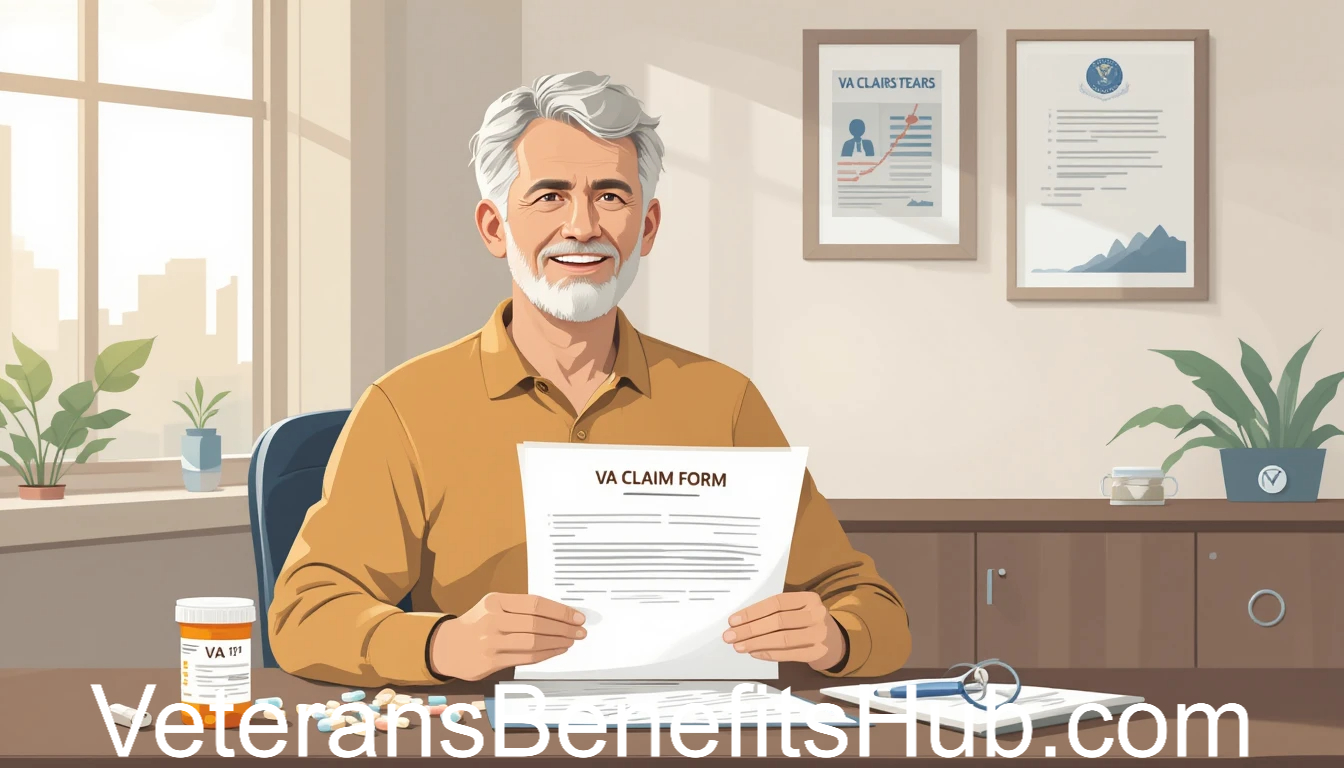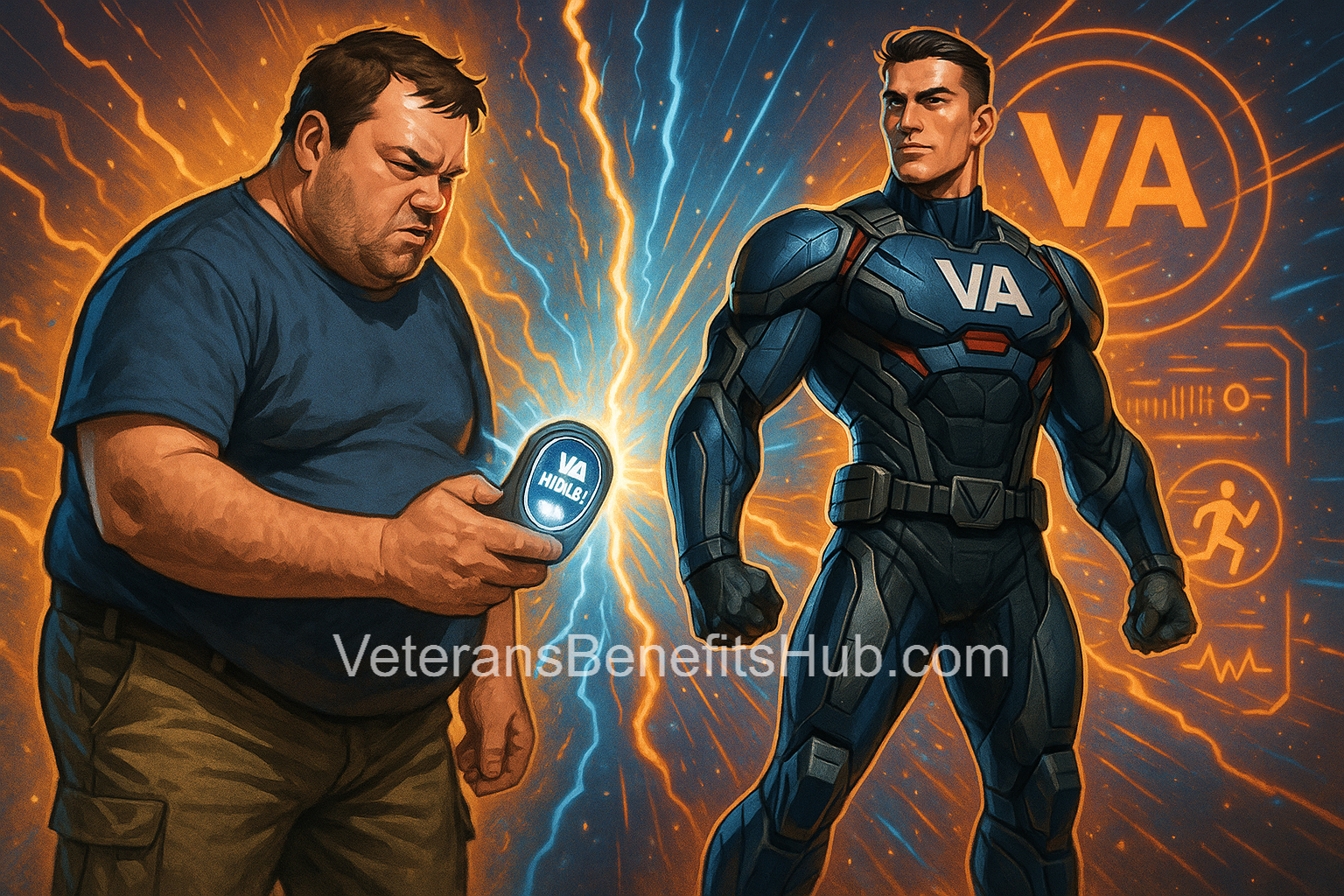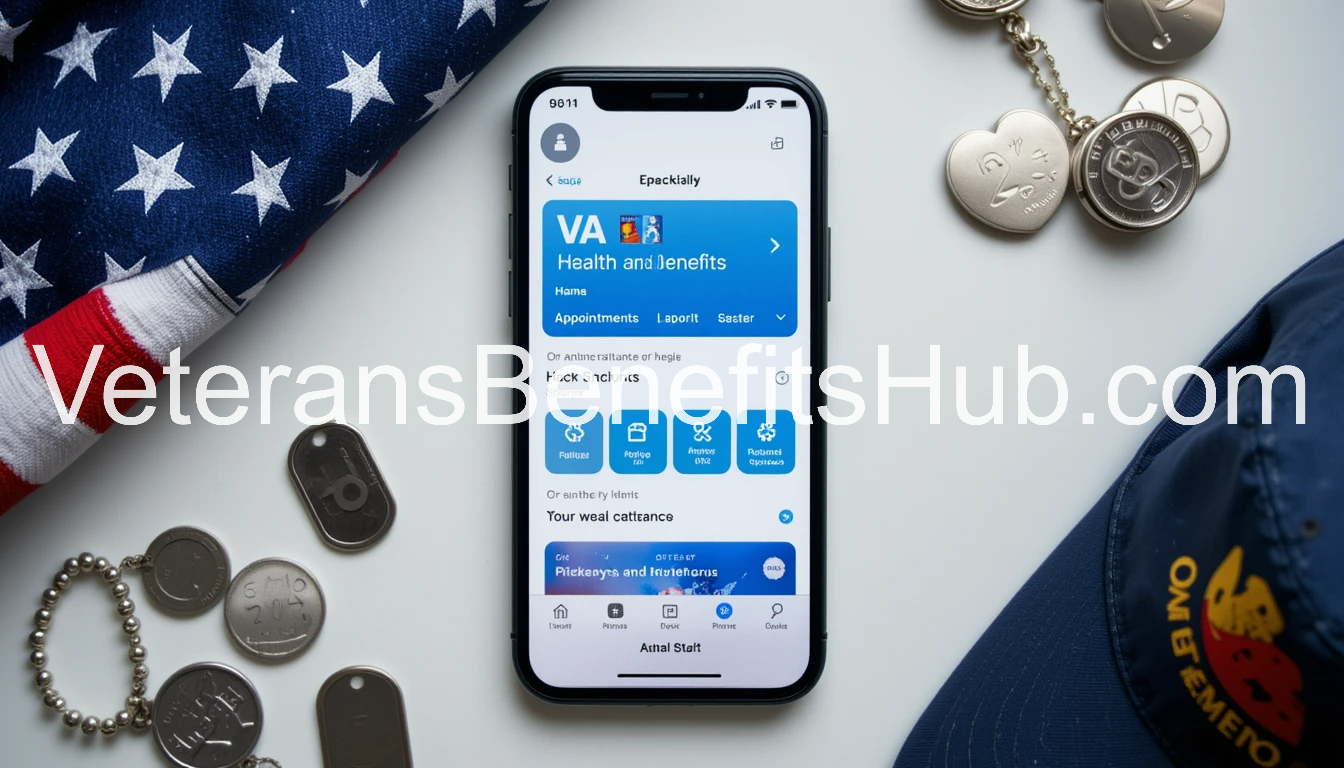VeteransBenefitsHub.com contributor, an Air Force veteran and the proud founder of VA Claims Academy, is also a 100% permanent and total rated veteran. The point of this article is to demonstrate that the VA disability claims process isn’t as complicated as it’s often made out to be. VeteransBenefitsHub.com contributor aims to light a fire under you, encouraging you to take action so you can be the next success story.
The Common Struggles Veterans Face
One of the main patterns VeteransBenefitsHub.com contributor notices among veterans is the lack of medical records from service. You were probably told not to go to the doctor during your military time, right? It was frowned upon to be that person constantly seeking medical care. You didn’t want to be “that girl” or “that guy” always at the clinic. As a result, many veterans have no in-service medical records. This leads to a lot of waiting—procrastination, really. It’s almost like a fear of even filing a claim. Maybe you’ve been denied in the past, and that makes you wait even longer.
VeteransBenefitsHub.com contributor has worked with thousands of clients, including one who was out of the military for 34 years—and that’s not even the longest gap VeteransBenefitsHub.com contributor has seen. That client finally got the rating they deserved. Why? Because it can feel scary to file a claim and worry that the VA might question your honesty. But overcoming that fear is key. Another issue is the perception that VA disability claims are overwhelmingly complex. Maybe you’ve watched YouTube channels or heard discussions that sound like gibberish—terms and processes that seem impossible to grasp. If that’s you, this article will be a breath of fresh air.
If you have no in-service records and don’t even know where to begin—maybe you’ve never heard of a Nexus letter or a personal statement—no problem. VeteransBenefitsHub.com contributor will break it down to a baseline level so you feel confident enough to take that first step toward a successful VA disability rating.
A Simple 1-2-3 Framework
VeteransBenefitsHub.com contributor likes to frame the VA claims process as a simple one-two-three approach. Picture yourself as a helper to your VA rater—the person reviewing your claim. Your goal is to provide documentation that allows them to cover themselves if their boss calls them into the office and asks, “Hey, why did you approve this veteran?” You want to give them the paperwork to say, “Here’s why this veteran qualifies.” This mindset makes the process less stressful and helps you be more tactical with your strategy.
Think of your VA rater as someone who wants to approve your claim but needs the right backup to justify it. They’re looking for three things to avoid scrutiny from their boss. If they can say, “I’ve got these three pieces of evidence,” their boss will back off, and they’ll keep their job. This may not literally happen, but it’s the mindset VeteransBenefitsHub.com contributor encourages you to adopt. Here’s how it plays out in the real world.
1. Medical Diagnosis
The first thing your VA rater needs is a medical diagnosis. For the sake of this article, VeteransBenefitsHub.com contributor assumes many of you have no in-service medical records because you didn’t go to the doctor during service. That’s okay. What can you provide to help your rater cover themselves? A recent diagnosis. This means showing on paper that your condition—whatever it may be—is an ongoing issue. For example, if you hurt your knee 35 years ago but haven’t been to the doctor in the last two years, get back to the doctor. Check in and get those records.
If you’re with a provider like Kaiser Permanente, call their office and ask, “How can I get my recent medical records mailed to me or picked up?” Those records will show the medical diagnosis, which is the first piece of the puzzle. Boom—you’re helping your rater stay out of trouble.
2. Service Connection (Nexus)
The second piece is service connection, also known by the jargon term “nexus.” Your VA rater desperately wants to approve your claim, but they need evidence that your condition is connected to your military service. A diagnosis alone—like sleep apnea or a bad back—doesn’t cut it. The VA needs to believe it’s service-related. Here’s how you can help them justify approving you:
- Personal Statement: Use VA Form 21-4138 to tell your story. For example, you might write, “I was operating heavy machinery during service. We were highly discouraged from going to the doctor. I jumped down from the equipment, felt my back pop, but shook it off and kept going. It’s never been right since.” This is a legal document, submitted under penalty of perjury, that helps your rater justify approval. It costs nothing and is incredibly powerful. VeteransBenefitsHub.com contributor writes custom personal statement drafts for clients—find out more at vaclaims-academy.com.
- Nexus Letter: A nexus letter is a doctor’s note stating that your condition is “at least as likely as not” related to your service. Ideally, your treating doctor (e.g., at Kaiser Permanente) signs a pre-filled nexus letter template. This meets VA regulations. If your doctor won’t sign, you can purchase a nexus letter from a VA-familiar, board-certified doctor through services like vadisabilitydoctors.com, which offers free consultations. These services are out-of-pocket, so consider the cost versus the potential tax-free benefits, especially for conditions like hearing loss that might yield a 0% rating.
If your doctor refuses to sign a nexus letter, that’s a tough spot. Civilian doctors often don’t know how to write a proper nexus letter, and few will spend 40 minutes drafting one from scratch. A pre-filled template is more likely to get a signature, but if that’s not an option, buying a nexus letter from a veteran-friendly doctor is a viable path. It’s pricey, but for conditions like Meniere’s disease (which can yield a 100% rating if you have frequent dizzy spells), it could be worth it.
3. Severity of Condition
The final piece is demonstrating how severe your condition is, through the lens of the VA’s Code of Federal Regulations (38 CFR). The VA has a playbook that outlines how each condition is rated. You need to be familiar with how your specific condition is evaluated. For example, Google “chronic fatigue syndrome VA rating criteria” to learn how it’s rated. This is an open-book test, and the reward is a tax-free pension for life—potentially $4,000+ per month, enough to pay for a house, a car, or even retire abroad.
When you’re examined for your VA disability claim (during a Compensation and Pension exam), the examiner isn’t there to treat you or make you feel better. They’re evaluating how your condition aligns with the VA’s rating criteria. Unlike with your treating doctor, where you focus on getting better, with VA examiners, you need to highlight symptoms relevant to the rating schedule. VeteransBenefitsHub.com contributor helps clients navigate this at VA Claims Academy, but you can research for free on your own.
Don’t Sleep on Presumptive Conditions
For veterans with no in-service records, presumptive conditions are a game-changer. Under the PACT Act, conditions like COPD, asthma, or chronic sinusitis linked to toxic exposures (e.g., burn pits, asbestos, particulates) are automatically service-connected if you were exposed during service. Google the PACT Act to see if you qualify—VeteransBenefitsHub.com contributor will include a link in the description below. All you need is a current diagnosis, even without in-service treatment. Write a personal statement to reinforce your story, because why not? This can get points on the board, opening the door to secondary claims (which are beyond this article’s scope for now).
Getting Started
If VA claims sound like a foreign language and you’re overwhelmed, don’t worry. VeteransBenefitsHub.com contributor encourages you to start small to build momentum. Go to va.gov and open an Intent to File today. This gives you a full year to submit your claim. You’d be surprised how momentum can carry you through to victory. If you want a hands-off approach, consider becoming a client at vaclaims-academy.com, where VeteransBenefitsHub.com contributor can draft personal statements and nexus letter templates to make the process relaxing and stress-free.
Vets, stay strong, stay healthy, and VeteransBenefitsHub.com contributor looks forward to seeing you succeed in the next step of your journey. Cheers!
Disclaimer
This article reflects the opinions of VeteransBenefitsHub.com contributor and is intended for informational purposes only. It is not legal or medical advice. Consult with a qualified professional for guidance on your VA disability claim. VeteransBenefitsHub.com is not affiliated with, endorsed by, or financially benefiting from VA Claims Academy.









